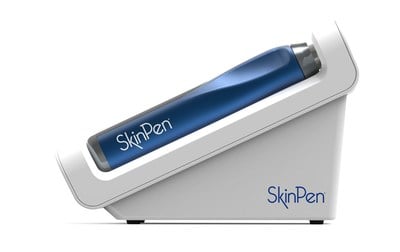As we celebrate nearly 25 years since the cosmetic use of botulinum toxin was first described in the medical literature, the landscape of aesthetic medicine continues to evolve. One area of increasing interest and focus is male aesthetics. Demonstration of the safety and effectiveness of minimally and non-invasive techniques, as well as increasing general awareness has translated into a greater acceptance of cosmetic procedures by men and the public in general. While these patients continue to present for hair restoration and laser hair removal, treatments traditionally thought of as ‘for women’ — injectable neurotoxin and fillers, laser resurfacing and rejuvenation as well as body contouring, are sharply on the rise. In fact, according to a survey by The American Society for Aesthetic Plastic Surgery (ASAPS), over the past 5 years (since 2010), there has been a 43% overall increase in both surgical and nonsurgical treatments, with a 94% increase in the use of hyaluronic acids and 84% increase in botulinum toxin1.
While the tools (toxins, fillers, devices) at our disposal are no different, the approach one takes to the treatment of the male patient is certainly different. This includes assessment of and respect for psychological, anatomic, and social differences between men and women. Of interest, two recent studies demonstrated these differences as they pertain to how men obtain information about and ultimately pursue cosmetic treatments. Men appeared more likely than women to look to social media — and likely their friends — for information on cosmetic dermatology, and in general seek out direct answers and solutions to an identified cosmetic concern2,3.
Facial aging is usually more apparent in women, in part due to the differences in skeletal structure but also in epidermal and dermal thickness. Respect for sexual dimorphism in facial structure, namely the balanced upper and lower proportions of the male face compared to the more prominent upper facial features in women, as well as greater facial muscle movement, is important when considering non-surgical enhancement of the aging face4. When discussing non-facial treatments, specifically body contouring, it is also important to note differences in both the distribution and type of fat. In men, fat is located over the anterior chest and central abdomen (android distribution), and appears earlier in life; whereas with women, fat is primarily located over buttocks and lateral upper thighs (gynoid distribution). With age, subcutaneous fat volume declines, but visceral fat increases and at a greater rate in men, an important point when discussing realistic treatment options5,6.
In this past year, two anticipated approaches to the treatment of submental fullness received FDA approval — injectable deoxycholic acid and a non-invasive applicator for cryolipolysis. While very different in their mechanisms of action, both highlight the trend toward less invasive treatments of well established cosmetic concerns that appeal to men as much, as if not more, than women7,8.
As these new technologies and methodologies continue to come to market, it is important that we appreciate the differences in how our patients evaluate and seek out care, as well as how we discuss expectations and approaches to treatment.





